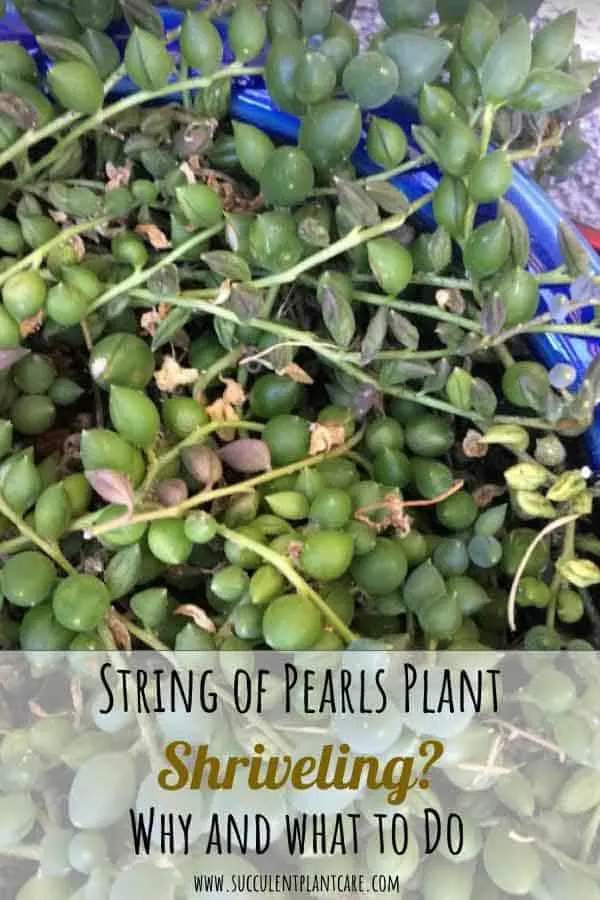String of Pearls plant (Senecio Rowleyanus) may seem intimidating at first. I know I was intimidated when I first got a hold of one of these beauties. I was nervous about caring for the plant and panicked when the leaves started shriveling. I wasn’t sure what to do next. Luckily after a few trial and errors, I have figured these plants out and they are actually pretty easy to care for.
So why do string of pearls shrivel? The most common reason for shriveled leaves in String of Pearls is watering issues. And by watering issues I mean they are not getting enough water.

They store water in their little round leaves and when their water storage runs low, these round beads begin to shrivel. Younger and less established String of Pearls need more water than mature plants. Mature plants can go longer without water and stay round and plump.
While too little water is the most common reason for shriveled leaves, too much water can also cause leaves to shrivel which can add to the confusion when caring for these plants. So how can you tell if your String of Pearls plant is getting enough, not enough, or too much water?
Underwatering or Overwatering?
The best way to tell whether your String of Pearls are shriveling from underwatering or overwatering is to pay attention to your watering habits. How often are you watering your plant? If you water once a month or less and you notice your String of Pearls are shriveling, they are clearly being underwatered.
Increase watering to once every two weeks and see what happens. Give the plant a good drink instead of a light mist to allow the water to reach the roots. The plant should start perking up after a good drink.
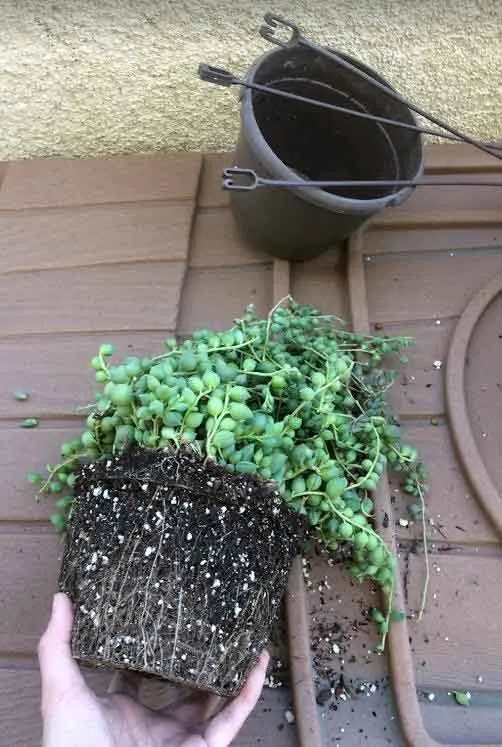
If, however, you have been watering your plant every week and the plant has been getting a good drink of water, but you notice the leaves are starting to shrivel, chances are the plant is receiving too much water. The little pearls or beads can actually burst from too much water and start to shrivel and become mushy.
If you suspect this is the case for your plant, don’t worry, just cut down on watering to once every two weeks or less and see what happens. The plant will usually bounce back when given a chance to dry out on its own.
Along with watering habits, pay attention to your watering techniques. If you water often, let’s say at least once a week, but you’re mostly misting instead of watering, the plant may still be NOT getting enough water. Don’t be afraid to give the plant a good drink of water, let the water reach the roots of the plant so the plant can absorb it from the root up.
From my own experience with String of Pearls, I mist baby plants and String of Pearls cuttings often, at least once a week, sometimes more until they are rooted and established. I stop misting the plant once they are rooted and switch to watering deeper but less often. The more mature and established the plants are, the more water they can store in their leaves and the less often you need to water. But when you do water, water deeply and give it a good drink.
How Often Do We Need to Water String of Pearls?
There really is no set rule about how often or when to water String of Pearls. It depends largely on the climate where you live. For instance, I live in a very dry climate so my watering schedule is adapted to the dry conditions of my environment. In the summer, during intense heat, I water as often as every 7-10 days, giving my String of Pearls a good drink. I cut back on watering when the weather cools down to about 10-14 days.
If you live in a humid location, you won’t need to water as much. During winter season, I mostly rely on rainwater and hold back on watering altogether because this is when I get a lot of rain in my area. But if we don’t get any rain at all during winter or rainy season (we are in a drought indefinitely), I still water at least once a month or every 2-3 weeks.
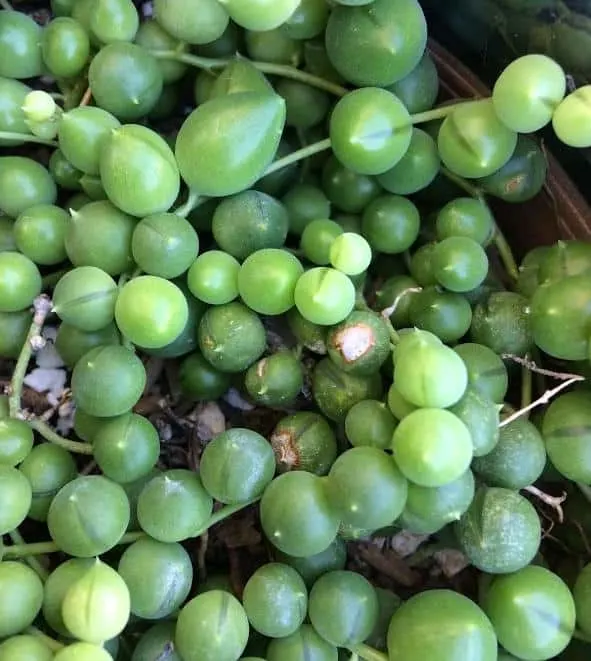
One good way to check whether it’s time to water is to check the moisture of the soil. The top inch of the soil needs to feel dry before you can water again. If you are unsure how much and how often to water in the beginning, it’s always better to underwater and increase watering as needed. Pay attention to how your plant looks and you can adjust watering accordingly.
There are also tools you can use to help you check the moisture in the soil and in the room such as moisture meters and hygrometers. Please click on my resource page for ideas.
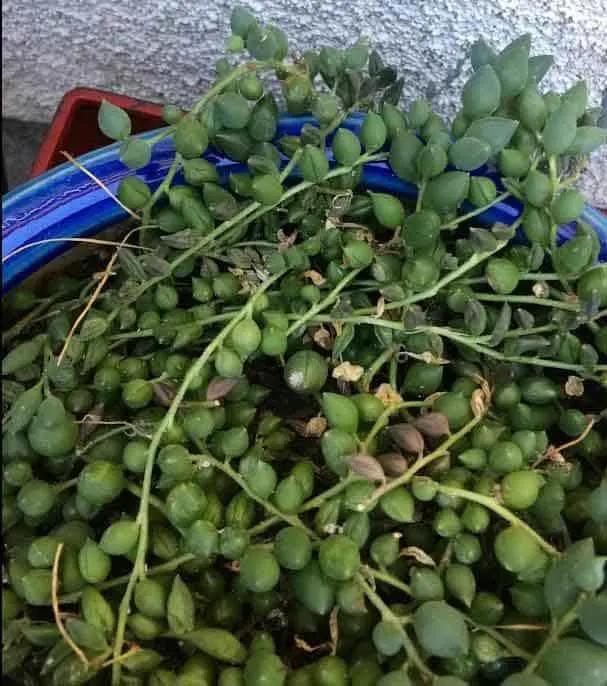
String of Pearls can also Shrivel from Sunburn or Sun Damage
How much sunlight do String of Pearls need? String of Pearls prefer a bright location but does not do well under full sun or intense sunlight, especially afternoon sun. If you notice your String of Pearls are shriveling and the beads have scars on them that appear dried up, that means they are being scorched by the sun and you need to move the plant somewhere where it can receive more protection from the sun.
I cannot stress how important this is for the survival of your String of Pearls.These plants do not do well under intense heat or sun and need some shade to protect them from the heat.
I live in sunny California and my String of Pearls have suffered from sun damage and sunburn during a heatwave even under a light shade.
What I normally do with my String of Pearls is I keep them under a shaded location outdoors, where they still receive bright morning light but are protected from the more intense afternoon sun. What I’ve learned is to use taller plants or outdoor furniture like lawn chairs or planters as shade for my String of Pearls and they seem to be happy.
What Type of Soil You Use Is Important
Along with watering techniques and the amount of sunlight, the soil medium you use is also very important for the survival of your String of Pearls. A well draining soil is a must. String of Pearls do not like to sit in wet soil for too long. This can promote root rot and is detrimental to the health of the plant. Providing a well draining soil is very important.
What has worked for me is using cactus soil mix combined with perlite for more drainage. I do not use exact measurements but eyeball it to about 1:1 solution of cactus mix and perlite. This is the easiest way for me to add drainage to my potting mix.
Others recommend using a sandy soil. This can be achieved by mixing cactus mix or potting soil with coarse sand (about 2:1 ratio). Or you can even use a mixture of all combined: cactus mix, pumice or perlite and coarse sand. For more info on soil and soil recipes, please click on “Best Soil and Fertilizer for Succulents”.
ARE STRING OF PEARLS INDOOR OR OUTDOOR PLANTS?
String of Pearls can thrive both indoors and outdoors. Whether indoors or outdoors, provide the right potting mix to give them the best chance at survival. If kept indoors, find a bright location with plenty of indirect light.
Morning sunlight is always preferable because it is less intense than afternoon sun. If kept by a window and you notice that the leaves are starting to get sun damage, you can either move the plant a few inches away from the window or provide more shade.
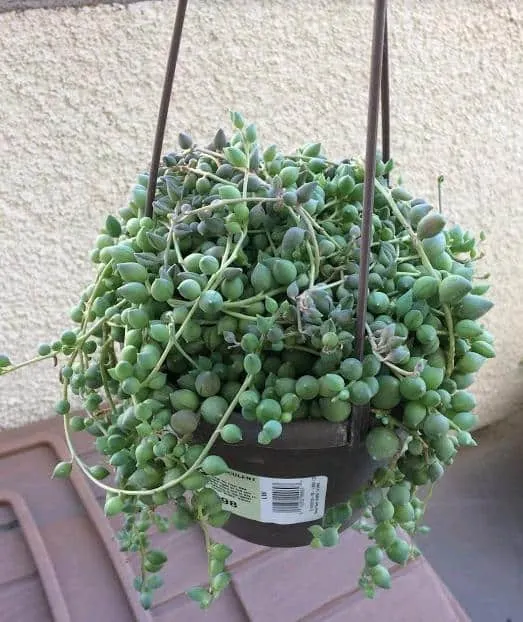
If kept outdoors, I want to stress once again how important it is for String of Pearls to be protected from intense sun or full sun. They do not do well under intense heat whatsoever so provide shade as much as possible.
Unlike other succulent plants that can get slowly acclimated to sunlight, String of Pearls will not do well under intense heat no matter how much you try to acclimate them to the sun. So provide shade or sun protection and these plants will thrive.
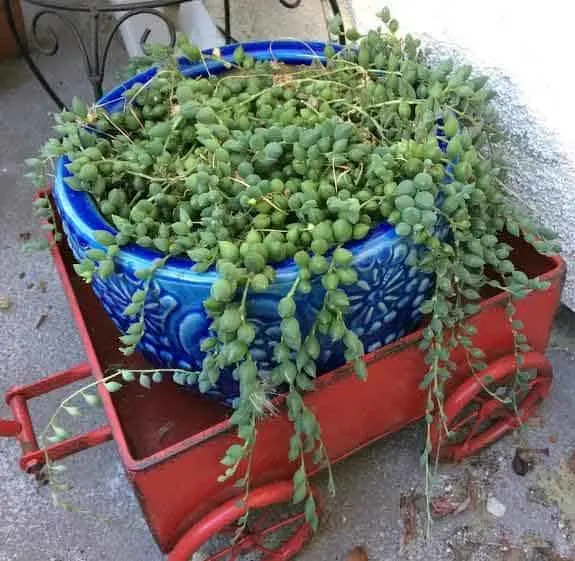
How do you propagate String of Pearls?
Stem Cuttings
String of Pearls are actually easy to propagate. The most common and easiest way to propagate String of Pearls is through stem cuttings. The plant roots from the stem and can root anywhere along the stem.
Choose a strand you want to cut. Take a few cuttings. The most common way is to take the cuttings and stick the ends in soil. The plant will root and new growth will develop.
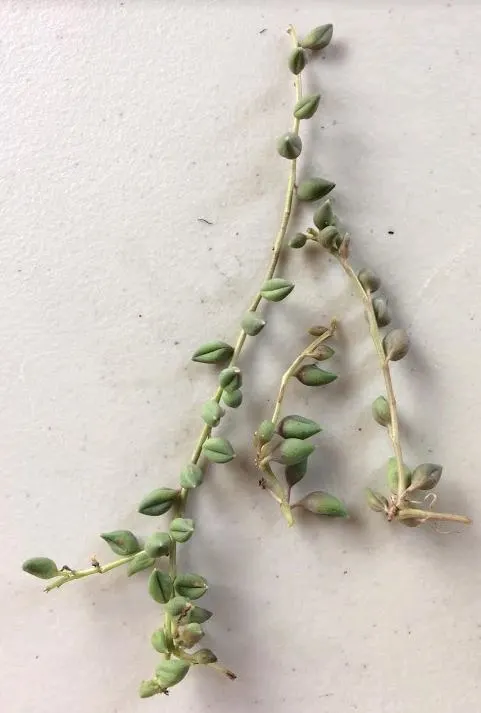
I do it slightly differently and it has worked out for me quite nicely. What I do with the stem cuttings is I lay the cuttings sideways on the soil. This way I start out with a fuller top and eventually have the plants trail.
It may take longer for them to trail this way, which I don’t mind, but if you want yours to trail or hang right away, then do the other method of sticking the end in soil. The plant will shoot out roots from anywhere it touches the soil.
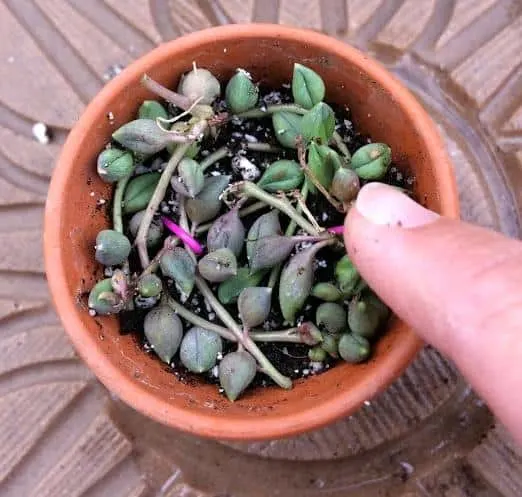
I use paper clips to hold the cuttings down so they are touching the soil.
Mist the Cuttings
From my experience, String of Pearls cuttings like to be misted and sprayed at least every few days until roots develop. I mist my cuttings at least once a week, but preferably more since I live in a very dry climate. Keep misting every few days so the cuttings do not dry out.
Continue misting every few days until roots develop. Once roots develop, I still mist the plants until they are more established and they get a little bigger. When the pearls are more mature, I stop misting and give them a good drink once every ten days or so. Keep in mind I live in a very dry climate and the plants need more water where I am.
How To Get String of Pearls to Flower
String of Pearls produce small, white fuzzy flowers that have a cinnamon-vanilla spiced scent. While getting String of Pearls to bloom isn’t a top priority, seeing and smelling these white fuzzy flowers are truly a treat and can really brighten your mood.
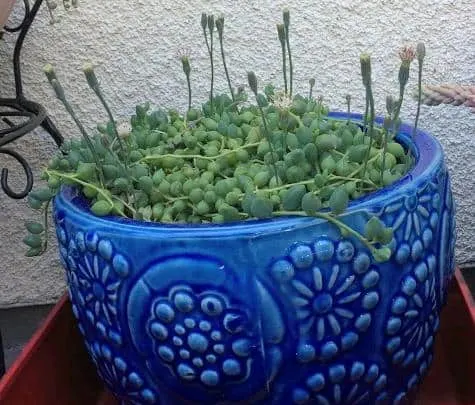
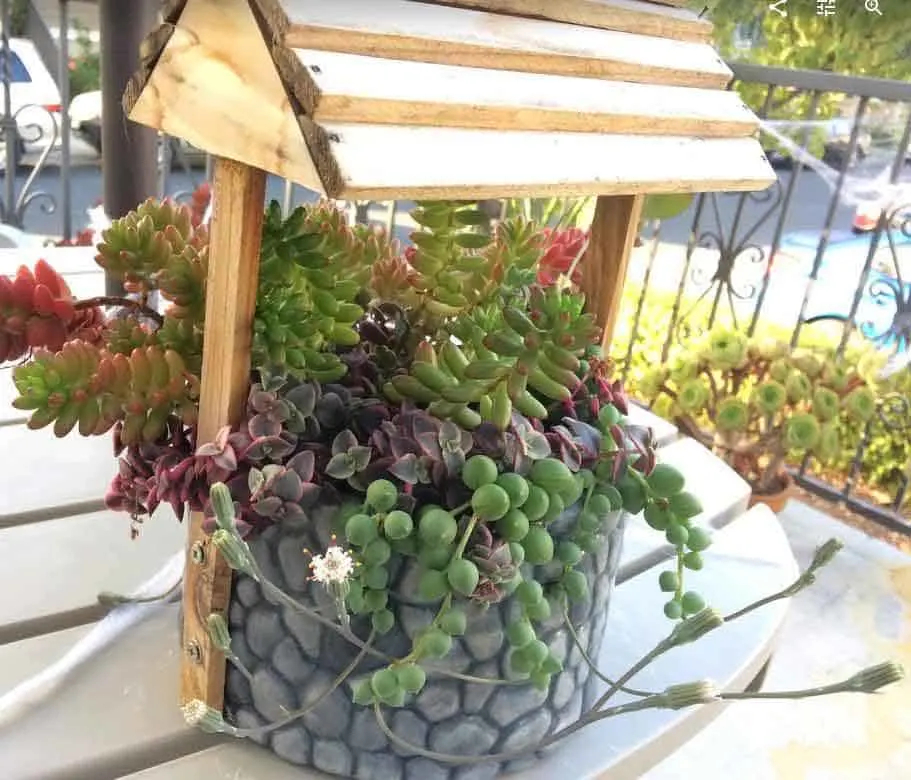
Proper Temperatures
To encourage flowering, provide proper temperatures. They need a distinct difference in night and day temperatures as well as summer and winter months. Succulents favor cooler outdoor nighttime temperatures of 50-55⁰F (10-13⁰C) or indoor night temperatures of at least 60-65⁰F(15-18⁰C).
Especially when kept in a controlled environment, succulents prefer a marked difference between their night and day temperatures to mimic their natural habitat, with the cool night temperatures having an integral part in the plant’s growth cycle.
Overwintering is also important if you want to see your succulents bloom. This can be achieved by keeping them cool and relatively dry in the winter months. Keep them cool during winter months with temperatures just above freezing, between 35-44⁰F (1.5-7⁰C). If kept indoors during winter, have them in a non-heated room if possible or keep the temperatures low to provide them the cold winter period that they need.
Fertilize
Fertilizing is definitely not necessary especially if your potting mix is fresh. I don’t really fertilize my String of Pearls regularly and they still bloomed. But if your String of Pearls have been in the same potting mix for over a year, nutrients in the soil may have already seeped out from all the watering.
Giving your plants the nutrients they need will help ensure proper growth and encourage blooms. It takes a lot of energy for plants to produce flowers, and feeding them extra nutrients will help supplement their needs during flowering season.
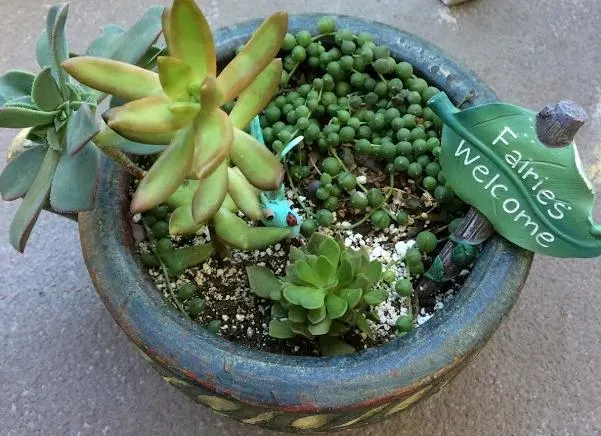
The most common recommendation is to fertilize during the active growing season, or during spring and summer months. Fertilizers are better applied at a quarter or half strength, about every two weeks. Refrain from fertilizing towards the end of fall season and during winter months.
A balanced blend of fertilizer diluted to half strength is suitable and commonly used. Fertilizer blends specially formulated for cacti and succulents are also suitable. Here are some fertilizers I recommend.
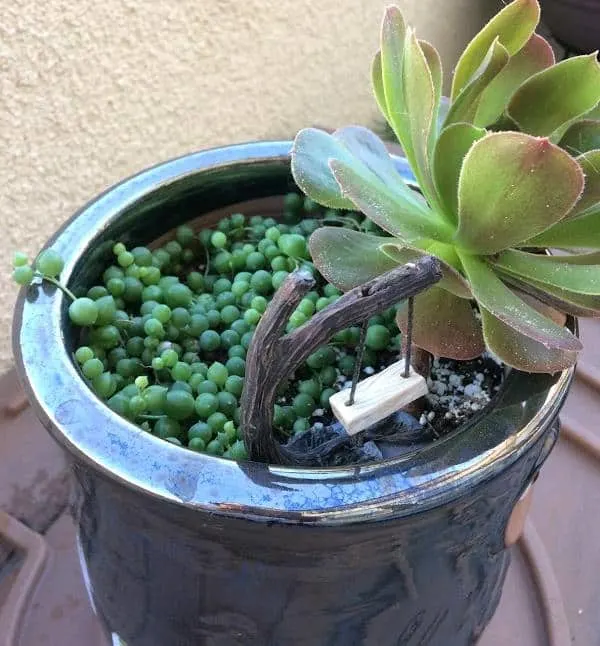
For more on String of Pearls plant, please click on “Tips on Growing String of Pearls.”
To read more about common problems with succulent plants, please click on “Common Problems with Succulents and How to Fix Them.”
Interested in seeing other hanging succulents or cacti? Check out my post “Hanging Succulents.”
